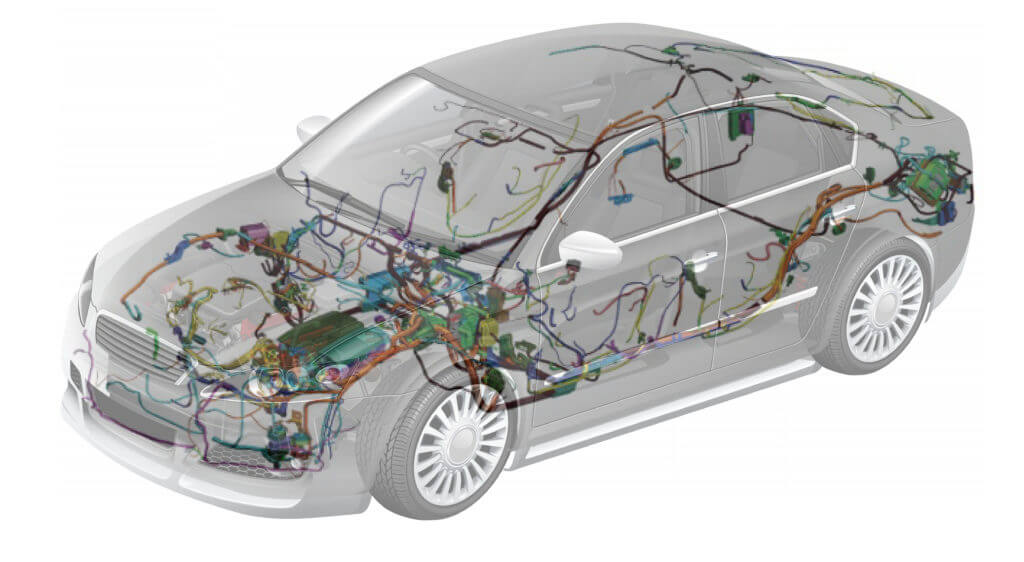THE IMPORTANCE OF DOOR TRIM PANELS IN CARS: A CLOSER LOOK WHAT IS DOOR TRIM PANEL IN CAR?

Door trim Panel in a car refers to the decorative and functional components that are installed on the interior surface of the car door. It is a covering that surrounds the door structure and is usually made of various materials such as fabric, vinyl, leather, or plastic. The door panel trim serves multiple purposes, including enhancing the interior aesthetics, providing protection to internal components, integrating controls and storage features, reducing noise and vibrations, and adding personalization options.
The door panel trim is designed to complement the overall interior design of the car and is often matched with the seat upholstery, dashboard, and other interior elements. It can feature different colors, textures, and patterns to create a cohesive and visually appealing cabin environment.
Beyond aesthetics, the door panel trim also serves functional roles. It protects the inner workings of the door, including wiring, mechanical components, and structural elements, from damage and external elements. Additionally, the trim panels often incorporate controls such as window switches, door lock buttons, and mirror adjusters, as well as storage compartments, cup holders, and armrests for added convenience and comfort.
Door panel trim may also include features for integrating electrical components like speakers, wiring harnesses, and control modules. It helps conceal these components while ensuring proper functionality and minimizing the risk of damage.
Door trim panels can be made from various materials, depending on the desired aesthetic and functionality. Common materials include fabric, vinyl, leather, plastic, and sometimes even wood or carbon fiber for high-end luxury vehicles. The choice of materials affects the look, feel, and durability of the trim panel.
Door trim panels are typically attached to the door frame using a combination of clips, screws, and adhesive. These connection techniques guarantee a solid and tight fit. At the point when essential, for example, for support or fixes, the trim panel can be carefully taken out by releasing the clips and eliminating the screws.
Many modern cars have airbags integrated into the door panels for added safety. Door trim panels are intended to oblige these airbags and guarantee their legitimate organization in case of a crash. Extraordinary consideration is given to guarantee that the trim board doesn’t obstruct the airbag’s capability or upset inhabitant assurance.
Overall, the door panel trim plays a critical part in upgrading the general appearance, usefulness, and comfort of a car’s interior. It combines both aesthetic and practical considerations to create an appealing and user-friendly cabin space.
PURPOSE OF DOOR TRIM PANNEL:
Door panel trims in cars serve multiple practical and functional purposes. Here are some common purposes of door panel trim:
Aesthetic Enhancement: Door panel trims add a visual enticement for the inside of the car. They come in different materials, varieties, and surfaces, permitting vehicle makers to coordinate them with the general plan subject of the vehicle. The trim boards add to a firm and sleek inside appearance.
Protection: One of the primary functions of door panel trim is to provide protection to the interior components of the car door. They act as a barrier, shielding the inner door structure, wiring, and mechanical parts from potential damage caused by external elements like moisture, dust, or accidental impacts.
Noise and Vibration Reduction: Door panel trims help reduce noise and vibrations from entering the cabin. They are designed with insulation materials that dampen road noise, engine vibrations, and wind sounds, creating a quieter and more comfortable environment for the occupants.
Concealment of Electrical Components: Present day vehicles integrate different electrical parts inside the doors, like speakers, window controllers, wiring bridles, and control modules. Door panel trim manages give a cover that disguises these parts, giving the inside a spotless and coordinated appearance while likewise safeguarding the electrical frameworks.
Integration of Controls and Storage: Door panel trims often house controls and storage compartments. Commonly found controls include window switches, mirror adjusters, door lock buttons, and sometimes even audio system controls. Additionally, door panel trims may feature storage pockets, cup holders, and armrests, providing convenient storage and accessibility for personal items and enhancing comfort during the ride.
Personalization and Customization: Door panel trims offer customization choices for car owners. They can look over a scope of materials, gets done, and varieties to customize the inside as per their inclinations and style. This permits people to establish a novel and customized driving climate.
Overall, door panel trims are not just decorative elements but also serve practical purposes such as protection, noise reduction, integration of controls, and customization. They enhance the comfort, functionality, and visual appeal of the car’s interior, contributing to an enjoyable driving experience.
REPLACEMENT OF DOOR TRIM PANEL:
· Assemble the vital devices: screwdriver (Phillips or flathead), trim panel removal tool (optional), trim clasps or fasteners (if necessary), and a substitution door trim panel.
· Find and eliminate any screws or fasteners tying down the trim panel to the door. These are regularly tracked down around the edges or in the armrest region. Utilize a screwdriver to eliminate them.
· In the event that there are any trim clips or latches holding the panel in place, cautiously pry them off utilizing a trim panel removal tool or a flathead screwdriver. Take alert not to harm the board or door.
· When all latches are eliminated, delicately pull the trim board away from the entryway. Be aware of any electrical associations for power windows, locks, or mirrors. Disengage these associations if essential.
· Eliminate any froth or protection joined to the rear of the old board and move it to the upgraded one, if relevant.
· Align the new trim panel with the door and make sure it fits properly. Reconnect any electrical connections for window controls or other features.
· Push the trim panel firmly against the door to secure it in place. Ensure that all clips and fasteners are properly engaged.
· Reinstall any screws or bolts that were removed earlier, tightening them securely.
· Test the door functions, such as window operation and lock mechanisms, to ensure everything works correctly.
By following these steps, you should be able to successfully replace a door trim panel.
TYPES OF DOOR TRIM PANELS:
Door trim panels come in a range of styles and configurations, depending on the vehicle’s make, model, and trim level. Here are a few common types:
· Full-Panel Trim: These panels cover the entire door, offering a cohesive look and maximizing protection and sound insulation.
· Partial-Panel Trim: Partial-panel trims cover only a portion of the door, often leaving the upper section exposed. They provide a balance between style and functionality.
· Sporty Trim: Some vehicles feature sporty trim panels that incorporate unique design elements, such as contrast stitching, carbon fiber accents, or perforated leather, to evoke a more dynamic aesthetic.
MAINTENANCE AND UPGRADES OF DOOR TRIM PANEL:
To keep your door trim panels in top condition, regular maintenance is crucial. Here are a few tips:
Clean with Care: Utilize a gentle cleaner and a delicate fabric to eliminate soil and messes, keeping away from rough materials that could harm the panel’s surface.
Address Damage Promptly: Repair any tears, scratches, or loose components to prevent further deterioration and maintain the panel’s integrity.
Customization Options: If you desire a personalized touch, consider aftermarket options like custom trim panel kits, which allow you to choose from a wide range of materials, colors, and finishes.
Door trim panels are an integral part of a vehicle’s interior, contributing to both its visual appeal and functionality. Understanding their purpose, construction, and available options empowers you to make informed decisions about maintenance and potential upgrades. By paying attention to these often-overlooked details, you can create a more comfortable and stylish driving experience.












